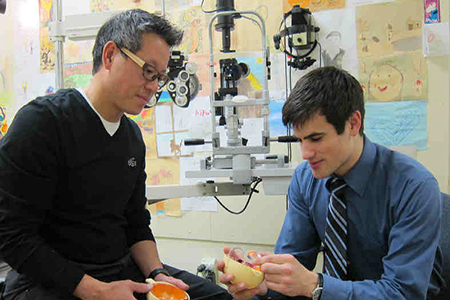“THINGS HAVE CHANGED A LOT in the fine arts and design field over the last few decades. When it comes to pursuing your dreams to make a career out of your creative passion, your parents are probably a lot less likely to roll their eyes than their parents would have been. After all, the general population is finally starting to understand that there are some incredible (and high-paying!) careers in the fine arts.
WHAT CAN I STUDY?
The short version is that there are classical fine arts (e.g., drawing, painting, sculpture and performance) and applied arts (e.g., design, filmmaking, graphic design, illustration, animation and architecture).
At Kendall College of Art and Design (MI), the most popular majors are photography and illustration, though, as Director of Talent Acquisition and Recruitment Kristopher Jones points out, specialty schools have a wider spectrum of choices than general schools with just an art department.
“An art department in a larger university tends to be the ‘misunderstood minority.’ There is a great power in joining others who share similar desires and dreams for creativity,” Jones says.
WHAT CAN I DO WITH MY DEGREE?
Your career opportunities only depend on your commercial aspirations. “Many students find great satisfaction in the pursuit of their own entrepreneurial studio of fine art or design,” says Jones. “Most often our design students are working in ‘product and experience design’ companies [designing products with the user experience in mind]. We have several programs that have a near 100 percent employment rate within one year of graduation.”
It’s important to remember that the skills you’ll learn can be valuable outside the arts world too.
“We prepare artists to be critical thinkers who approach the problems of the world with great creativity,” says Dr. Rachel Schreiber, dean and vice president for academic affairs at the San Francisco Art Institute (SFAI). “These skills apply to a wide range of careers within the arts and beyond.”
HOW DO I CHOOSE AN ARTS/DESIGN SCHOOL?
Jones recommends that you start by making a list of all your educational priorities, like class sizes, programs offered, campus life, reputation, etc. Rank them in the order of what is most important to you, and then compare the list to the schools you are considering.
If possible, visit the schools that you’re interested in. “Since the portfolio requirement for art schools can vary greatly, it is extremely valuable for prospective students to talk to their admissions counselor about their portfolio and how they might edit it prior to applying to that school,” advises Elizabeth O’Brien, vice president for enrollment at SFAI. “This will give the greatest chance of being admitted and possibly even receiving a merit scholarship.”
As a reminder, Jones says that your active participation is crucial to a lifelong success in art/design. “Don’t trust any school that says, ‘Come to us and we will make you.’”
WHAT SHOULD I BE DOING NOW?
“Enroll in art classes at your school, particularly if your school offers AP art courses,” says O’Brien. “Every fall, the National Portfolio Day Association holds events throughout the country, which are free college fairs open to students looking to get feedback on their portfolio.” Visit www.portfolioday.net to learn more.”



